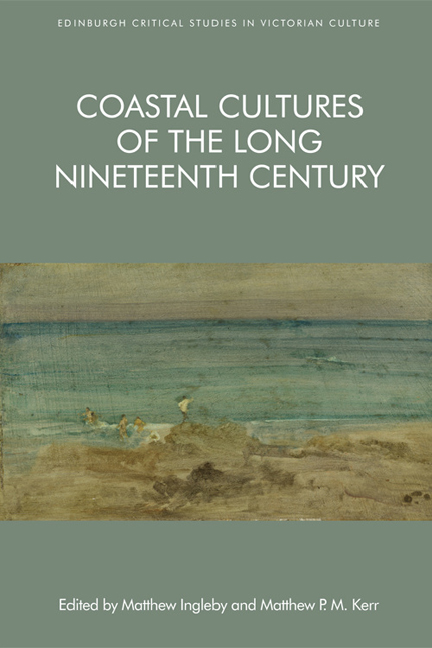Introduction
Published online by Cambridge University Press: 01 May 2021
Summary
In the latter part of the eighteenth century and at the beginning of the nineteenth, the British cultural imagination turned to coasts. Prior to this period, coasts tended to be thought of as uninviting, even dangerous, places – ‘repulsive’, according to Alain Corbin. A compound of interlinked developments – in medicine, in aesthetics, in leisure, in law, in military strategy, for example – altered the prevailing mood, however, and during the long nineteenth century, the coast was visited more often, and by an increasingly diverse collection of people. This swell of interest in the littoral meant that coasts began to function as zones of cultural and commercial interchange. In part, this was because coasts became places of literal intermingling, where geologists and quack doctors, composers and painters, holidaymakers and recluses might meet intentionally or accidentally. Geological tourists followed Mary Anning to Lyme Regis in droves to purchase or discover for themselves sea-shells by the sea-shore. And towards the end of the nineteenth century, artists formed colonies at Pont-Aven, St Ives and elsewhere. Coasts became common ground for manifold, often contrasting styles of thought and practice.
At the same time, though, the coast was as much a place for imaginative projection as actual visitation, and a growing obsession with depicting and defining the coast characterises the period considered by this volume. Increasingly, the coast could seem to be at once a space of clarity, and misty distance, a terminus or breaking-off point, and a place of embarkation – a place of solitude and exhilaration, of uselessness and instrumentality. It offered a location for convalescence as well as sublime abandon, for the eking out of a fixed income in old age, but also for reckless gambling, a place for showing off and a place to retire from public view. The susceptibility of the coast to such varied conceptions means that it often functioned as literal grounds for their comparison – both a means of discriminating between superficially related considerations, and a point of contact between apparent immiscibles.
This disposition toward intermixture need not be a matter of vanishing horizons and vaporous liminality. Indeed, some of the strongest links between the seemingly contradictory understandings sustained by the coast are material and political.
- Type
- Chapter
- Information
- Coastal Cultures of the Long Nineteenth Century , pp. 1 - 26Publisher: Edinburgh University PressPrint publication year: 2018



